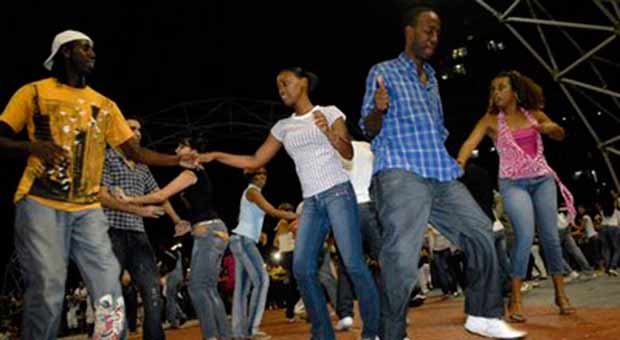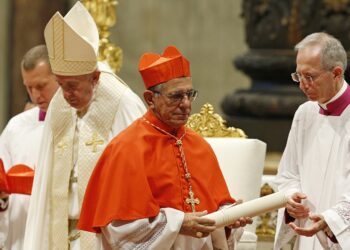Some Cuban migrants found in dancing a way of living despite not being professional dancers. Throughout Latin America there are schools of Cuban popular dances where most instructors do not hold academic degrees but simply they are from the island and live to teach how to dance salsa, mambo, cha cha, rumba, among other dances that almost strange within the Caribbean country in these times.
In Cuba, finding a young man who can move to those rhythms today is difficult. On the rescue of these traditions Marta Bercy goes with the realization of the modern and Afro-Latin dance international workshop WORKUBA, which will run from February 15 to 23 at the America Theatre in Havana.
The event, open to domestic and international people, both professional and amateur dancers, offers workshops and master classes in contemporary dance, ballet, Afro-Cuban folklore, rumba, salsa, cha cha, “rueda de casino” and also bachata, Argentinean milonga and folklore, which although they are not Cuban have African influence.
In early 2000s, the contemporary dancer researched on Latin dances and found that the common element in all was the African influence.
“I had the experience of CUBALLET maître Laura Alonso began organizing that since 1991. With her permission, I applied almost the same idea and I added the Afro-Latin dances for the event does not to stay in ballet and modern dance. In all American countries there are black communities and I gave myself the task of rescuing those dances which had a choreography and cultural importance and social significance, “the professor of modern dance and folklore at the Prodanza Center since 1987, said.
In 2003, she ran the first WORKUBA in Argentina and since then renews the event annually. By incorporating Cuba as another venue since 2010, the teacher could convene the festival twice a year, in September in South America and in February in the Caribbean island.
More than 20 editions of WORKUBA have offered workshops on Dominican merengue and bachata, the Uruguayan candombe, chacarera of Argentina, as well as tango and milonga, Brazilian lambada, the kouk, samba, Peruvian stomping, which the teacher says is the cutest of all known by her since it requires hip movement and much more.
“We dose at each festival dances because we don’t announce a workshop till we have a native dance teacher from each of the country” she says.
Years of research and workshops gave the master a range of knowledge about the different ways to take on the traditions on the continent. “For example, in Brazil there was a further degeneration of African dances. While in Cuba we almost preserved the way that the slaves brought, the Portuguese settler there was very severe, did not allow blacks to develop their dances. Consequently, a Brazilian dance to Shango has nothing to do with that of Cuba, they are diametrically opposed, and it doesn’t even have songs. An Afro-Cuban folklore dancer does it like Oshun in Nigeria and people acknowledge it. However, Brazil has its own wealth, there is capoeira, a dance, not a martial art, and there are two types: the Angolan capoeira and one alone; one takes singing and the other does not, “the scholar said.
Thanks to WORKUBA she and other artists and fans learned of the existence of Chicago Stepping, a forefather of hip hop that was practiced in the city of Chicago from the 1930s. From the United States they have had workshops of jazz, rock and roll, hip hop , but when the Chicago Stepping appeared there was more of a surprised person because it is very similar to hip hop but danced in couples .
“Not even the Americans involved in that WORKUBA knew this history and the learning of these dances is useful especially for those who wish to do choreography. Most dances in America were created by blacks, same as most of the dances in Cuba have a black root, “she says who just created a play for a new film from Argentinean director Gustavo Tareto . The film “Las insoladas” will premiere in Havana in the next Festival of New Latin American Cinema and to comply with this Bercy must first teach actresses how to dance, some of them well-known stars but with no experience in this field.
So many years shuttling between Cuba and Argentina also made her a fan of the art of the South American country and indeed she has had dancers of Teatro Colon in Buenos Aires to teach in the workshop as partners.
“No one would think that tango has black roots and even the word tango is Yoruba, it is said tangó and means dancing men, for in the beginning was done by men known as los compadritos. The milonga is just black, despite the low continuity of people of that race in Argentina since they sent them to war in Uruguay at the time of so much racism, “the mulatto said proud of the energy imposed on their dancing by her ancestors.
In early 2014, she was awarded a prize in Argentina by her trajectory and artistic contribution. As she is frequently invited to give workshops, courses or being a jury at events, the teacher has travelled almost all provinces.
“Particularly in Latin American countries they don’t have the same organization of artistic education we have in Cuba. People will attend events that I organize to upgrade, “she said.
On dance in her country two issues concern her. The teacher recognizes that the bodies of those studying ballet and dance have changed from those of her generation but sometimes people put more emphasis on acrobatics than dancing with style, motivation and proper artistic projection. “And they should not stop working that. It happens not only here but in many countries. The dancers are eager to prove they can do many things and neglect the other. You have to dance movement, that requires interpretation work with theater classes, motivation, “she said.
The other concern comes from recent experiences of WORKUBA. “Last year when we did in Havana the 20th edition, the participants did not know Cuban cha cha, I staged something with it and when I started the choreography who did know it were the foreign participants, not the national ones,” she said.
So this year Bercy organized several workshops of Cuban popular dances like the cha cha and rumba, to go to the rescue of the ballroom dances in the island, sheconfirmed. “In Latin America there are schools where Cuban popular dances are taught like salsa, cha cha, mambo, casino, among others, and academies of Afro-Cuban folklore. How come do we not have them in Cuba for people to attend after work hours? We do not have any school that teaches salsa and that should be a concern, “she suggested.
Still she has the debt of incorporating in her workshops dances from Jamaica, Venezuela, Ecuador, Guatemala and Nicaragua, among others. But her plans are inclusive and infinite, and most importantly, all for the rescue of the folk dances of different countries of the continent.
Cover photo: Roberto Suarez (internet)










